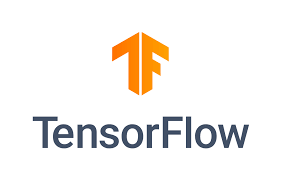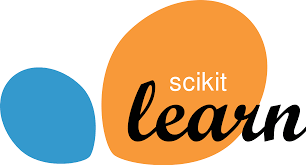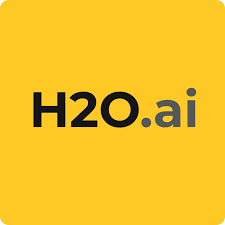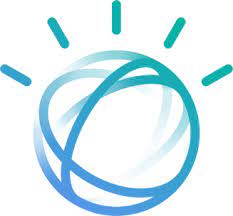Quality control is a critical aspect of manufacturing and production processes, ensuring that products meet the desired standards of safety, functionality, and reliability. However, traditional quality control methods are often time-consuming, labor-intensive, and prone to errors. Artificial intelligence (AI) has emerged as a powerful tool in improving quality control operations, offering businesses greater accuracy, efficiency, and consistency. In this blog, we'll explore some of the best AI tools for quality control, from defect detection and predictive maintenance to automated inspection and process monitoring. We'll discuss how these tools can benefit businesses by reducing costs associated with defects and downtime, improving product quality, and enabling them to stay competitive in a rapidly evolving market.
TensorFlow

TensorFlow is an open-source machine learning library that is widely used by researchers, developers, and data scientists to build and deploy machine learning models. Developed by Google Brain Team, TensorFlow is a powerful tool for building complex neural networks and deep learning models. It provides a comprehensive ecosystem of libraries and tools that make it easy to create and train machine learning models for various tasks such as image classification, natural language processing, and speech recognition. One of the key advantages of TensorFlow is its flexibility and scalability, which allow it to work with large datasets and complex models.
Pros
Cons
Overall Rank
Keras

Keras is a popular open-source deep learning library that simplifies the creation of neural networks. It provides a user-friendly and intuitive interface that allows developers to easily build, train, and deploy machine learning models. With Keras, users can quickly prototype complex models with minimal code, thanks to its high-level API, which supports various neural network architectures and optimization algorithms. Additionally, Keras can run on top of several popular deep learning frameworks such as TensorFlow, Microsoft Cognitive Toolkit, and Theano, making it highly flexible and easy to integrate into existing workflows. Its simplicity and flexibility have made Keras one of the most widely used deep learning libraries today.
Pros
Cons
Overall Rank
PyTorch

PyTorch is a popular open-source machine learning framework developed by Facebook's AI Research team. It is widely used by researchers and practitioners for developing deep learning models. One of the key advantages of PyTorch is its dynamic computational graph, which allows for flexible and efficient model building and debugging. The framework is also known for its ease of use, thanks to its intuitive syntax and extensive documentation. Additionally, PyTorch provides support for a wide range of tasks, including computer vision, natural language processing, and reinforcement learning. Its ecosystem includes various tools and libraries that facilitate the development and deployment of machine learning models.
Pros
Cons
Overall Rank
Caffe

Caffe is a deep learning framework that is widely used in both academic and industrial settings. It is known for its fast processing speed and scalability, which makes it an excellent choice for large-scale machine learning tasks. Caffe provides a simple and intuitive interface that enables users to easily create, train, and deploy deep learning models. Its modular architecture allows for easy customization and integration with other libraries and tools. Additionally, Caffe offers support for a wide range of platforms and hardware, including CPUs, GPUs, and even mobile devices. Overall, Caffe is an excellent choice for anyone looking to perform deep learning tasks quickly and efficiently.
Pros
Cons
Overall Rank
Scikit-learn

Scikit-learn is a popular open-source machine learning library built on top of Python. It provides a variety of supervised and unsupervised learning algorithms, as well as tools for data preprocessing, feature selection, model evaluation, and more. Scikit-learn is widely used in industry and academia for tasks such as classification, regression, clustering, and dimensionality reduction. One of the key advantages of scikit-learn is its ease of use, with a consistent API and clear documentation making it accessible to both beginners and experts in machine learning. Its extensive collection of functions also allows for rapid experimentation with different models and algorithms, which is essential for data scientists and researchers looking to explore new methods and techniques.
Pros
Cons
Overall Rank
Apache Mahout

Apache Mahout is an open-source machine learning library that offers scalable and distributed algorithms for clustering, classification, and collaborative filtering. Mahout is built on top of Apache Hadoop, which provides a distributed file system and a framework for distributed computing. This means that Mahout can handle large datasets and perform computations in parallel across a cluster of computers. Mahout also provides a set of pre-built algorithms that can be used out-of-the-box or customized to fit specific needs. With Mahout, users can apply machine learning to real-world problems and build intelligent applications that can make predictions or discover patterns in data.
Pros
Cons
Overall Rank
H2O.ai

H2O.ai is a cutting-edge technology company that specializes in providing businesses with the tools they need to implement machine learning and artificial intelligence solutions. Their open-source platform, H2O, allows developers and data scientists to build and deploy machine learning models with ease. They also offer several proprietary solutions, such as H2O Driverless AI, which enables businesses to automate the entire machine learning pipeline. With H2O.ai, businesses can gain insights into their data faster and more efficiently than ever before, ultimately leading to better decision-making and improved outcomes.
Pros
Cons
Overall Rank
RapidMiner

RapidMiner is a powerful and user-friendly data science platform that enables users to analyze, model, and visualize data through a drag-and-drop interface. With a wide range of machine learning algorithms, data preprocessing tools, and visualization capabilities, RapidMiner can help users quickly derive insights and make informed decisions from their data. RapidMiner is a highly flexible platform that can be used across industries, from finance to healthcare, to optimize business processes and improve outcomes. The platform is available in both cloud-based and on-premise options, making it accessible for organizations of all sizes.
Pros
Cons
Overall Rank
Weka

Weka is a popular open-source machine learning tool that offers a user-friendly interface for data preparation, modeling, and evaluation. It supports various data types and algorithms, making it a versatile tool for both beginners and experienced data scientists. Weka's graphical user interface makes it easy to visualize data and experiment with different algorithms, while its command-line interface provides flexibility for more advanced users. Additionally, Weka has a large and supportive community, with extensive documentation and numerous online resources available. Overall, Weka is a powerful and accessible tool for machine learning enthusiasts and professionals alike.
Pros
Cons
Overall Rank
DataRobot

DataRobot is an automated machine learning platform that empowers organizations to build and deploy accurate predictive models rapidly. The platform provides an end-to-end solution that automates the entire machine learning process, from data preparation to model deployment and monitoring. With DataRobot, data scientists and analysts can quickly create predictive models using a drag-and-drop interface, eliminating the need for manual coding. The platform also offers a comprehensive suite of tools for data exploration, feature engineering, model training, and model evaluation. Additionally, DataRobot leverages the latest advancements in artificial intelligence and machine learning algorithms to provide users with the most accurate predictions possible. Overall, DataRobot is an excellent tool for businesses looking to harness the power of machine learning to drive better business outcomes.
Pros
Cons
Overall Rank
Alteryx

Alteryx is a powerful data analytics tool that allows users to gather, analyze and share data in an easy-to-use platform. The software is designed for both data analysts and business users, allowing them to work collaboratively to build automated workflows and reports. Alteryx also provides a range of pre-built connectors and data sources, making it easy to access and work with data from a variety of sources. Additionally, the software's drag-and-drop interface simplifies the process of building complex data models, freeing users from the need to write code. With its comprehensive feature set and user-friendly interface, Alteryx is an ideal tool for anyone looking to streamline their data analytics workflows.
Pros
Cons
Overall Rank
KNIME

KNIME (Konstanz Information Miner) is an open-source data analytics platform that allows users to manipulate and analyze large datasets with ease. KNIME has a user-friendly interface that allows non-programmers to perform data analysis with minimal coding knowledge. The platform offers a wide range of tools and functionalities, including data cleaning, transformation, and visualization. KNIME's modular design allows users to create custom workflows that can be easily modified or shared with others. Additionally, KNIME offers integration with other data analytics tools and services, making it a versatile platform for data analytics professionals and researchers.
Pros
Cons
Overall Rank
Orange

Orange is a vibrant and refreshing citrus fruit that is known for its tangy and sweet flavor. It is a great source of vitamin C, fiber, and antioxidants, which make it an excellent addition to any diet. Oranges can be eaten as a snack, squeezed into juice, or used in various recipes, including salads, desserts, and savory dishes. They come in many varieties, such as navel, Valencia, and blood oranges, each with its own unique taste and texture. With its bright color and zesty aroma, the orange is a beloved fruit that can brighten up any dish and add a burst of flavor to your day.
Pros
Cons
Overall Rank
IBM Watson

IBM Watson is a powerful and sophisticated artificial intelligence platform that can process natural language, perform complex data analysis, and generate insights and recommendations based on the data it analyzes. Watson is widely used in various industries, including healthcare, finance, and retail, where it helps businesses make informed decisions, enhance customer engagement, and improve operational efficiency. Its ability to learn and adapt to new data and information also makes it an ideal tool for research and development. With its vast capabilities and impressive track record, IBM Watson has become one of the most sought-after AI platforms in the market today.
Pros
Cons
Overall Rank
Google Cloud AI Platform

Google Cloud AI Platform is a cloud-based platform that provides a comprehensive set of tools and services for building, deploying, and managing machine learning models. The platform offers various services such as automated machine learning, data preprocessing, and training, as well as easy integration with other Google Cloud services like storage and computing. The AI Platform also provides powerful tools for monitoring and managing machine learning models, including real-time monitoring, logging, and debugging capabilities. With its easy-to-use interface and robust set of tools, Google Cloud AI Platform is an ideal solution for businesses of all sizes looking to leverage the power of machine learning to improve their operations.
Pros
Cons
Overall Rank
Microsoft Azure AI Platform

Microsoft Azure AI Platform is a comprehensive suite of tools and services that enable organizations to build and deploy intelligent applications and solutions using artificial intelligence and machine learning. The platform offers a wide range of features, including cognitive services, bots, machine learning models, and data analytics tools, all integrated with Azure's cloud infrastructure. With the Azure AI Platform, businesses can easily create intelligent applications that can analyze and interpret large volumes of data, automate workflows, and improve decision-making. The platform's flexibility, scalability, and ease of use make it an ideal choice for businesses of all sizes looking to leverage AI and machine learning technologies to gain a competitive edge.
Pros
Cons
Overall Rank
In conclusion, AI-powered quality control tools have become an indispensable part of modern manufacturing and production processes. They help businesses to improve the accuracy, consistency, and efficiency of their quality control procedures, while also reducing the risk of human errors and minimizing waste. The tools covered in this blog - from computer vision and machine learning-based defect detection to predictive maintenance and automated inspection - have demonstrated their effectiveness in improving quality control operations across a range of industries. Their ability to analyze vast amounts of data and identify patterns that humans might miss has led to significant improvements in product quality and reduced costs associated with defects and downtime. As AI technology continues to advance, we can expect to see more sophisticated quality control tools that can adapt to new challenges and provide even greater insights into production processes. However, businesses looking to implement AI tools for quality control should approach their adoption with caution, ensuring that they select the right tools for their specific needs and carefully consider the ethical and privacy implications of collecting and using sensitive data.
